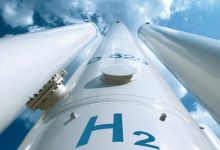International registrar and classification society DNV GL have recognised three new technologies it believes possess the potential to “significantly decarbonise” CO2-heavy industries by 2030, including new battery storage chemistries, high-temperature heat pumps, and green hydrogen.
DNV GL is one of those companies with an amorphous and highly technical focus but is nevertheless one of the leading experts in renewable energy and green technology development and innovation. Thus, when DNV GL speaks, it is often worth listening.
Last week, the company published its Technology Outlook 2030 for the power and renewables industry which seeks to answer what technologies matter, what trends should be closely monitored, and how can society and industries optimally prepare for 2030. DNV GL’s Technology Outlook explores these questions against known trends such as a growing, ageing population, and an expected global GDP increase of more than a third this decade.
The report looks at a number of various technologies – including well-established renewable energy technologies such as solar PV and offshore wind, and newer technologies such as floating solar and wind.
However, of particular importance were three technologies DNV GL expect will play a vital role in helping to carbonise otherwise CO2-heavy industries by 2030.
New battery storage chemistries will play a vital role in increasing the efficacy and reliability of battery storage technologies over the coming decade, with solid-state batteries taking the lead, driven in part by a demand to decarbonise the transport sector.
DNV GL also expects that high-temperature heat pumps which can reach temperatures of 200°C degrees will be able to provide industrial heat demand, while green hydrogen (hydrogen made from renewable electricity) will be able to compete against traditional blue hydrogen by 2030, creating new applications for decarbonising the heat and transport sectors.
“In its first phase the energy transition was focused on decarbonizing the power sector, which was effectively done by creating market incentives to promote the uptake of solar and wind energy,” said Lucy Craig, Vice President of Technology and Innovation at DNV GL – Energy. “Twenty years later, these forms of green power generation are not only safe and reliable but have also become cost-competitive.
“The second phase of the energy transition is shifting towards CO2 intensive industries which are much harder to decarbonize, such as the transport and heating sectors. Therefore, we require equally decisive and binding policy actions to get emerging technologies such as green hydrogen, high-temperature heat pumps and new types of battery storage chemistries off the ground and build momentum for a similar success to that of core decarbonization technologies.”
This second phase of the energy transition will be driven by a global impetus to limit carbon emissions which DNV GL expects will lead to more than doubling the share of electricity powered by wind and solar energy in the final energy demand mix, when compared to today’s levels.
However, supporting policy actions will be vital, and will include everything from financial incentives such as carbon taxes or price guarantees, nationally binding policy ambitions and targets, research and development investments, and regulatory measures such as industry standards or mandates – such as implementing efficiency measures for new buildings.
Importantly, these policy and investment efforts should also look to support the growth of the three technologies DNV GL highlight as being vital to this decade’s efforts to reign in CO2 emissions.
Solid-state battery technologies will lead the way for the next generation of electric vehicles, driven largely by an almost universally acknowledged need to decarbonise the transport sector, and the concurrent popularity of electric vehicles. Lithium-ion batteries currently account for 95-99% of batteries used in the transportation industry, however DNVL GL point out that “this widely adopted rechargeable battery is not optimal for safety or resource-utilization.”
Conversely, solid-state battery technology has the potential to address most of the concerns with Li-ion battery technologies currently in vogue – such as being non-flammable, operable in sub-zero temperatures, while also increasing the range, charging time, and performance of electric vehicles.
However, solid-state batteries are not being produced in high volumes and several challenges in development must be overcome if solid-state batteries are to increase in viability and popularity.
In much the same way as the transport sector, the global heating sector is similarly transforming due to growing political and public demands to decarbonise. However, currently, the global heating sector remains the largest single end-user of energy, contributing 30% of global CO2 emissions in 2018 – which paves the way for significant decarbonisation opportunity, such as heat pumps.
Not a new technology, scalability and a resulting reduction in cost, in tandem with technological advancement, could see heat pumps meet the energy demands of industrial processes that require temperatures of up to 200°C degrees.
Finally, DNV GL expects that green hydrogen will be able to compete against blue hydrogen – where emissions are captured and stored or reused – by 2030, driven in part by increased demand to scale-up the production of green hydrogen technologies which will, in turn, drive down the costs of these green electrolysers.
DNV GL predicts that electrolysis will become a common part of hydrogen supply some time between 2030 and 2035 but will depend on the price of natural gas, the duration of oversupply of variable renewable energy, and expected cost reductions.
Depending on these factors, DNV GL’s research expects that several countries will begin to implement green hydrogen for heating applications to help decarbonise their building sector, while the manufacturing industry will be able to replace coal and gas with cleaner green hydrogen-powered heating.








